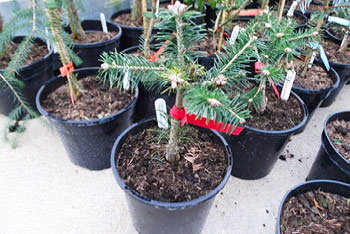Special delivery arrives at Westonbirt Arboretum
An important date in the annual calendar for an arboretum is the intake of new plants, helping conserve rare species and acquire new plants of interest for the collection.
How are plants chosen?
At Westonbirt, The National Arboretum plants are selected by the arboretum’s Propagator for the internal propagation list in two ways: there may just be one specimen in the collection or there are species that are in poor health and a resilient propagation or replacement species needs to be sourced or grown.
The plant intake at the end of October 2022 included two types of plants. Plants grown from tree material sourced from the arboretum and propagated using grafting. Other plants were sourced from very select growers, providing plant species of ‘landscape interest’ to appropriately enhance the existing collection at Westonbirt.
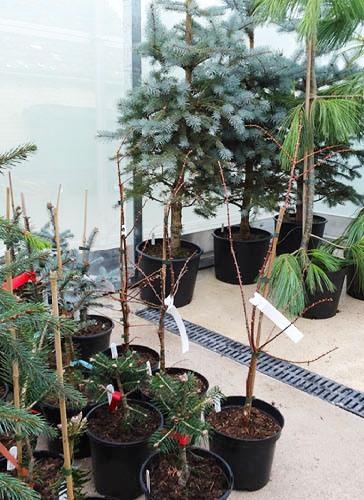
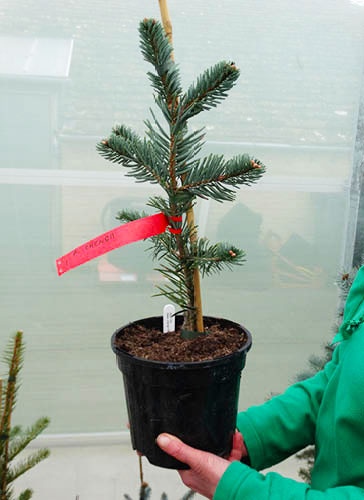
Which species were chosen for autumn 2022 plant intake?
Abies chengii – Cheng fir
Thought to be an original George Forrest introduction F30663, collected as seed in 1930.
Abies pindrow var pindrow - West Himalayan fir
Grown from wild collected seed collected in 1993 in Himachal Pradesh, India
Abies recurvata var recurvata – Min fir
Three very young plants in the collection have been struggling, and are a globally threatened tree appearing on Red List IUCN, Status Vulnerable
Abies squamata – Flaky Fir
There are two young trees in the collection, planted in 2015, but not doing so well. They were grown from wild collected seed collected in Sichuan, China at 3750m. Also, a threatened species and the IUCN Status for this species is vulnerable. It is hoped that new ‘grafted’ plants will be more resilient.
Picea martinezii – Martinez spruce
This is a rare spruce, and there is just one young plant in the Westonbirt collection, IUCN status Endangered. From the Sierra Madre Oriental, Mexico, where it is threatened by overlogging
Picea spinulosa – Sikkim spruce
Just one plant in the collection. An attractive spruce from Sikkim and Assam in the Eastern Himalayas that has a pendulous habit and female cones that are purple-red in Spring.
Pinus x holfordiana – Holford Pine
Only seven mature trees are left and this is an important tree historically for the arboretum, named after Sir George Holford. There is a regime of planting new young specimens every few years to ensure that this tree species is not lost to the collection. Seems resistant to Dothistroma (Red Band Needle Blight)
Will the plants be isolated?
This delivery marked an auspicious occasion being the first arrival of plants to start their new life at the arboretum in the new Quarantine House installed in 2022, generously funded by membership donations, individual donors and legacies.
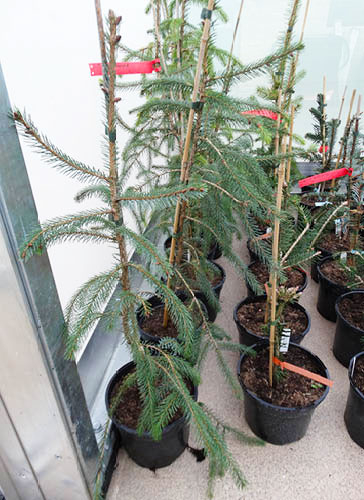
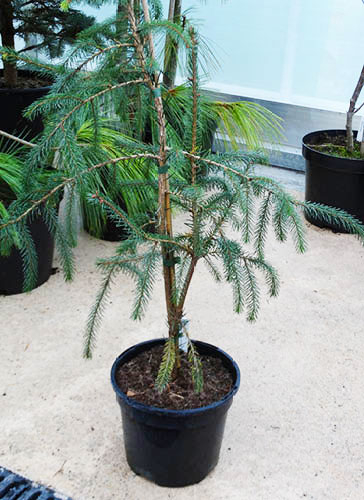
Capacity for intake very much depends on the size of the plants received, some of last year’s autumn plants are much larger than normally selected, e.g. the Pinus x holfordiana. Due to delays caused by the pandemic, the plant has been received a year later than normal and a year’s extra growth is quite substantial!
The plants will stay in the Quarantine House within bay 1, for the first 12 weeks. More plants will be selected for the arboretum’s spring intake from some of the UK’s botanic gardens and arboreta surplus lists. The spring intake will grow separately in bay 2 for 12 weeks.
Any plants that come into the nursery are checked thoroughly to see if there are pests and diseases, the pots are disinfected and if necessary, any weeds are removed. There is no heating in the Quarantine House, it is not needed as all plants and seeds are grown in cold greenhouses for resilience. The only exception is the cuttings house which does have heated benches as increased humidity is required. The plants will be irrigated as and when required, using the purified and UV-treated water from the recently installed rainwater collection tanks. All of this ensures the best bio-security and care for this precious and rare plant intake.
What happens to the plants after quarantine?
Once the plants come out of isolation they will be mixed in with the rest of the nursery stock and if large enough will be put forward for planting but if not, they will travel through the nursery glasshouses until they are large enough to be planted and will be potted up into larger air-pots as and when required.
Where they will be planted and when has yet to be decided. The arboretum’s Propagator and Curator will go out and consider suitable sites, after all the tree inspection, pruning and removal work has been completed and taking into account any trees that may have been lost over the winter months to disease or windblow, offering-up new planting sites.
The plants brought in for ‘landscape interest’ will be planted in prominent places.
This new planting is another exciting phase in the arboretum’s life to look forward to in the coming months!
